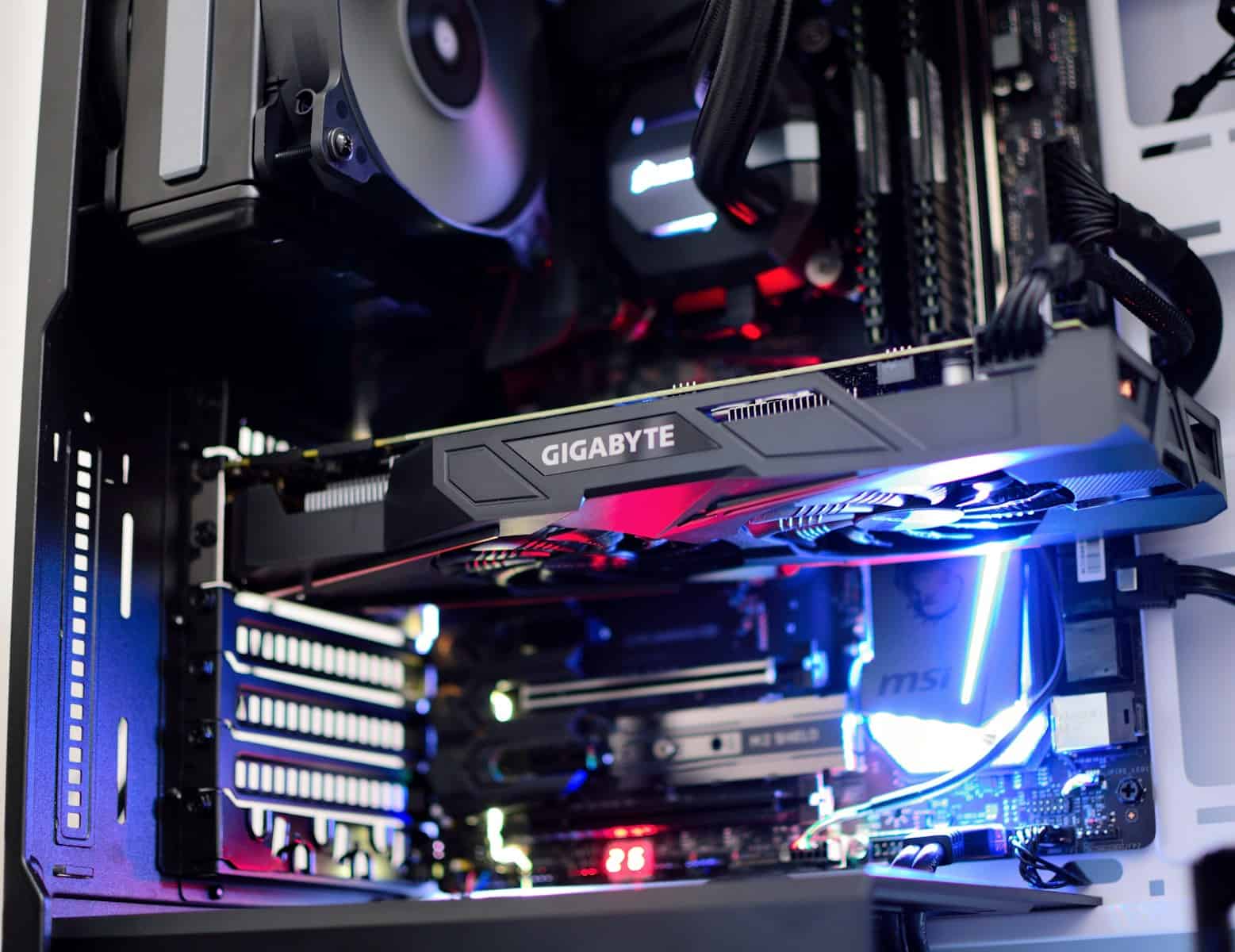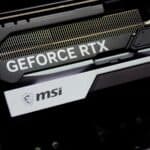Overclocking your GPU can boost performance, but it may lead to stability issues and increased power consumption. If you’re looking to stop overclocking your GPU, you’ve come to the right place. To disable GPU overclocking, you can reset your graphics card settings to default using the manufacturer’s control panel.
For NVIDIA users, this process is straightforward. You can access the NVIDIA Control Panel by right-clicking on your desktop. From there, navigate to “Manage 3D Settings” and change the Power Management Mode to “Optimal Power” instead of “Prefer Maximum Performance.”
AMD users can follow a similar process using the AMD Radeon Settings. Open the control panel and look for options to reset your GPU to its default clock speeds.
| GPU Brand | Control Panel | Steps to Disable Overclocking |
|---|---|---|
| NVIDIA | NVIDIA Control Panel | Right-click Desktop > NVIDIA Control Panel > Manage 3D Settings > Set Power Management Mode to Optimal Power |
| AMD | AMD Radeon Settings | Open AMD Radeon Settings > Performance > Reset GPU to default settings |
Troubleshooting Overclocking Issues
Overclocking your GPU can boost performance, but it can sometimes lead to instability. If you’re experiencing crashes, freezes, or graphical glitches, it might be time to revert your overclocking settings. Here’s how to stop overclocking your GPU:
1. Identify the Overclocking Software
The first step is to determine which software you used to overclock your GPU. Popular options include:
- MSI Afterburner: A widely used and versatile overclocking utility.
- EVGA Precision X1: Designed for EVGA graphics cards but often compatible with other brands.
- ASUS GPU Tweak II: ASUS’s own overclocking software with a user-friendly interface.
- Gigabyte AORUS Engine: Offers overclocking and other features for Gigabyte GPUs.
2. Reset to Default Settings
Once you’ve identified the overclocking software, open it and look for an option to reset to default settings. This will revert your GPU’s clock speeds, voltage, and fan settings to their original values.
Here’s where to usually find the reset option in popular overclocking utilities:
| Software | Reset Location |
|---|---|
| MSI Afterburner | Look for a reset icon (often a curved arrow) near the core clock and memory clock sliders. |
| EVGA Precision X1 | Click the “Restore” button in the main interface. |
| ASUS GPU Tweak II | Find the “Default” button or a similar option in the main settings panel. |
| Gigabyte AORUS Engine | Look for a “Reset” or “Default” button within the overclocking section. |
3. Uninstall the Overclocking Software (Optional)
If you want to completely remove the overclocking software and its settings, you can uninstall it from your computer. This is generally not necessary unless you’re experiencing conflicts or prefer a clean slate.
4. Driver Reinstallation (Optional)
In some cases, it might be helpful to reinstall your graphics drivers after reverting the overclock. This can ensure there are no lingering settings or conflicts that could cause instability.
5. Monitor for Stability
After resetting your overclock, monitor your system for stability. Play games, run demanding applications, and observe if the issues you were experiencing have been resolved. If the problems persist, there might be other factors at play, such as overheating or driver issues.
Remember that overclocking is never guaranteed to be stable, and it’s always a good idea to proceed with caution and monitor your system closely.
Understanding GPU Overclocking
GPU overclocking involves increasing a graphics card’s clock speed and voltage to boost performance. This process can enhance gaming and rendering capabilities but also carries risks.
Basics of GPU Overclocking
Overclocking pushes a GPU beyond its factory settings. You adjust the core clock, memory clock, and power limit to achieve higher frame rates and improved graphics processing.
Key components in GPU overclocking:
- Core Clock: Controls the speed of the GPU processor
- Memory Clock: Affects the speed of the graphics memory
- Voltage: Supplies power to the GPU
- Power Limit: Determines maximum power consumption
Tools like MSI Afterburner or EVGA Precision X1 allow you to fine-tune these settings. Start with small increments and test stability after each change. Monitor temperatures closely to prevent overheating.
| Setting | Impact | Safe Range |
|---|---|---|
| Core Clock | Processing speed | +50 to +150 MHz |
| Memory Clock | Texture loading | +100 to +500 MHz |
| Voltage | Power delivery | +25 to +100 mV |
| Power Limit | Overall performance | 100% to 120% |
Risks and Downsides of Overclocking
Overclocking can lead to stability issues and hardware damage if not done carefully. Increased voltage and clock speeds generate more heat, potentially shortening your GPU’s lifespan.
Common risks include:
- System crashes and blue screens
- Artifacts in games or applications
- Permanent hardware damage in extreme cases
Overclocking voids warranties and may increase power consumption. Your GPU might become unstable during intensive tasks, leading to data loss or corrupted files.
To mitigate risks:
- Use incremental increases
- Stress test after each change
- Ensure proper cooling
- Monitor temperatures constantly
If you encounter issues, disable overclocking through your GPU control panel or reset to default settings in overclocking software.
How to Disable GPU Overclocking
Disabling GPU overclocking can help stabilize your system and prevent potential issues. You can accomplish this through several methods, each with its own advantages.
Through BIOS or UEFI Settings
Accessing your computer’s BIOS or UEFI is often the most direct way to disable GPU overclocking. To enter the BIOS, restart your computer and press the designated key (often F2, F10, or Del) during startup.
Navigate to the overclocking or performance settings. Look for options related to GPU clock speed or memory clock.
Set these values to their default or disable any automatic overclocking features. Save your changes and exit the BIOS.
This method is effective but requires caution. Incorrect BIOS settings can cause system instability.
Using Overclocking Software Tools
Popular overclocking tools like MSI Afterburner offer easy ways to disable overclocking. Launch the software and locate the clock speed sliders.
Reset these sliders to their default positions. This action removes any applied overclocks.
For NVIDIA users, the NVIDIA Control Panel provides another option. Access it by right-clicking on your desktop.
Go to “Manage 3D Settings” and set the Power Management Mode to “Optimal Power” to disable overclocking.
AMD users can use AMD Radeon Settings. Open it, navigate to the performance tab, and reset any custom profiles.
Resetting to Factory Settings
Resetting your GPU to factory settings is a foolproof way to remove overclocking. For NVIDIA GPUs, open the NVIDIA Control Panel.
Click “Help” and select “Restore Defaults” to reset all settings including any overclocks.
AMD users can achieve this through the Radeon Settings. Go to the “Preferences” tab and select “Restore Factory Defaults”.
After resetting, restart your computer to ensure all changes take effect.
| Method | Difficulty | Reversibility |
|---|---|---|
| BIOS/UEFI | High | Easy |
| Software Tools | Low | Easy |
| Factory Reset | Medium | Moderate |
Choose the method that best suits your comfort level and technical expertise.
Optimizing GPU Performance Without Overclocking
You can boost your GPU’s performance without resorting to overclocking. By tweaking settings and improving cooling, you’ll achieve better stability and speed.
Adjusting GPU Settings for Stability
Start by using GPU monitoring tools like GPU-Z or HWiNFO to track your graphics card’s behavior. These provide valuable data on temperature, clock speeds, and power usage.
Next, adjust your GPU’s power settings. In the NVIDIA Control Panel, set the Power Management Mode to “Optimal Power” for a balance of performance and efficiency. AMD users can find similar options in the Radeon Software.
Fine-tune in-game graphics settings. Lower demanding options like anti-aliasing and shadow quality. This reduces GPU load while maintaining visual quality.
| Setting | Impact on Performance |
|---|---|
| Anti-aliasing | High |
| Shadow quality | High |
| Texture quality | Medium |
| View distance | Medium |
Improving Cooling and Power Management
Proper cooling is crucial for stable GPU performance. Clean your GPU’s fans and heatsink regularly to remove dust buildup. This simple step can significantly improve heat dissipation.
Adjust your fan curve using software like MSI Afterburner. Set fans to spin faster at lower temperatures for better cooling under load.
Consider upgrading your case fans or adding more if temperatures remain high. Good airflow helps maintain cooler GPU temperatures.
Lastly, ensure your power supply can handle your system’s needs. An inadequate PSU can lead to instability and reduced performance.
Monitoring and Troubleshooting
Keeping a close eye on your GPU’s performance is crucial for maintaining system stability. Regular monitoring helps prevent issues and ensures optimal operation.
Using GPU Monitoring Tools for Safe Operation
Several tools can help you track your GPU’s performance. GPU-Z is a popular option that displays real-time information about your graphics card. It shows clock speeds, temperature, and memory usage.
MSI Afterburner is another useful tool. It offers an on-screen display that can be customized to show various metrics while gaming. This allows you to keep an eye on GPU temp and clock speeds without alt-tabbing out of your game.
HWiNFO64 provides detailed system information and real-time monitoring. It’s particularly useful for tracking temperatures across your entire system, not just the GPU.
| Tool | Key Features |
|---|---|
| GPU-Z | Real-time GPU info, Lightweight |
| MSI Afterburner | On-screen display, Overclocking capabilities |
| HWiNFO64 | Comprehensive system monitoring |
Identifying and Addressing Stability Problems
Stability issues often manifest as crashes, freezes, or blue screens. If you encounter these problems, first check your GPU temperature. High temperatures can cause instability and reduce your card’s lifespan.
If temperatures are normal, look at your clock speeds. Unstable overclocks are a common cause of system crashes. Try resetting your GPU to stock settings using your graphics card’s control panel.
Blue screens can be particularly informative. The error code displayed often points to the source of the problem. Look up these codes online for specific troubleshooting steps.
If issues persist, consider running a stress test. Tools like FurMark can push your GPU to its limits, revealing any underlying stability problems.
Frequently Asked Questions
Disabling GPU overclocking involves reverting to original settings through various methods. These methods range from adjusting Windows settings to using specialized software tools.
What steps are required to revert a GPU to its original clock settings?
To revert a GPU to its original clock settings:
- Open your GPU control panel (NVIDIA Control Panel or AMD Radeon Software).
- Navigate to the overclocking or performance section.
- Look for an option to reset or restore default settings.
- Apply the changes and restart your computer.
This process returns your GPU to its factory settings, ensuring stable performance.
Is it possible to disable GPU overclocking through Windows 10 settings?
Windows 10 doesn’t have direct settings to disable GPU overclocking. You’ll need to use your GPU’s control panel or third-party software. These tools give you more control over your graphics card’s performance settings.
How can I reset my laptop’s GPU to factory defaults after overclocking?
Resetting a laptop GPU to factory defaults is similar to desktop GPUs:
- Open your laptop’s GPU software.
- Find the overclocking or performance section.
- Look for a “Reset” or “Restore Defaults” option.
- Apply the changes and restart your laptop.
If these steps don’t work, check your laptop manufacturer’s website for specific instructions.
Which software can be used to undo GPU clock speed modifications?
Several software options can help undo GPU clock speed changes:
- MSI Afterburner
- EVGA Precision X1
- Sapphire TRIXX
- ASUS GPU Tweak II
These tools allow you to reset your GPU’s clock speeds to their default values.
Can overclocking a GPU have long-term adverse effects?
Overclocking can potentially cause long-term effects:
- Increased heat generation
- Higher power consumption
- Reduced lifespan of GPU components
- Potential for system instability
Proper cooling and moderate overclocking can minimize these risks.
What is the recommended procedure for stopping overclocking on an AMD graphics card?
To stop overclocking on an AMD graphics card:
- Open AMD Radeon Software.
- Go to the “Performance” tab.
- Click on “Tuning” if available.
- Select “Reset” or “Restore Defaults”.
- Confirm your choice and restart your computer.
This process returns your AMD GPU to its original settings, ensuring stable performance.
| Software | Compatibility | Ease of Use | Features |
|---|---|---|---|
| MSI Afterburner | NVIDIA, AMD | High | Extensive overclocking options |
| AMD Radeon Software | AMD | High | Built-in for AMD GPUs |
| NVIDIA Control Panel | NVIDIA | Medium | Basic overclocking features |
| EVGA Precision X1 | NVIDIA | Medium | Advanced fan control |







